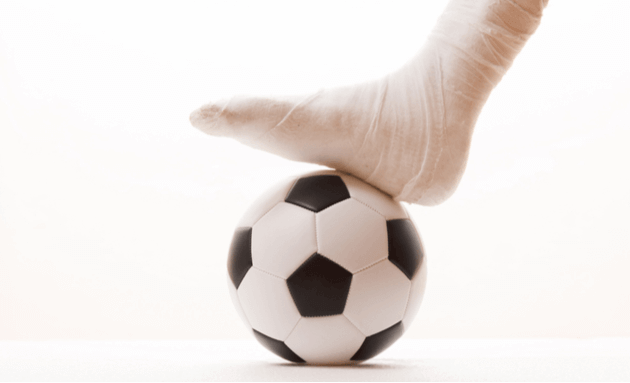
Knee Pain: Precautions, Causes and Treatment of Knee Injuries
Whatever your target is as an athlete, it is important to listen to your body. Take your legs for example. Your knees are probably the first point of impact during your chosen sport, be it running, playing football, basketball, skiing, biking, or tennis. The constant pounding of your body weight on your knees during these activities could lead to intense strain and undue wear and tear of the cartilage, ligaments and muscles around your knee joints. This, in turn, could lead to sprains or injury and severe knee pain, leaving you unable to play or walk with a normal gait in the absence of appropriate first aid and rest.
For amateur athletes just starting out, it will be helpful to remember that the smartest precautions for knee pain and sports injuries are the most basic ones:
- Wear well-fitting shoes with good heel cushioning
- Warm-up for at least 10 minutes before your activity
- Build up your pace slowly
- Remember to 'cool down' after an intense workout or after a run to let your body recover from the exertion
Knee Injuries: When Should You See a Doctor?
[caption id="attachment_10911" align="alignnone" width="630"] Knee injury consulting at medanta[/caption]
Knee injury consulting at medanta[/caption]
Pulled muscles or strains are a common occurrence during an amateur athlete's initial training period, or a professional athlete's physically demanding lifestyle. Most of these are minor issues and can be treated with timely and adequate rest, ice packs or over-the-counter painkillers. However, some high-impact sports activities such as football and long-distance running could result in more serious injuries such as a torn ligament or knee cartilage, kneecap dislocation, fractures, tendinitis, and so on.
Some common symptoms for knee sprain and minor injury can include swelling and redness, popping or crunching noises when you bend the knee or inability to straighten it. But you must immediately book an appointment with the doctor if:
- You see a marked swelling or an obvious deformity in your knee or leg
- You cannot bear to stand because your knee is unable to support your weight
- You have a fever in addition to the pain and swelling
- Your legs feel wobbly or you feel that your knee may just 'give out'
Getting injured or being unfit to run can be demotivating and frustrating for any athlete. But if you listen to your body and wait until you have recovered sufficiently to start playing or running again, you could avoid chronic knee pain problems and even surgery.
Here are the different types of knee injuries faced by athletes and the kind of treatments they require.
Types of Athletic Knee Injuries
-
Runner's knee and Jumper's knee
Also known as 'Patellofemoral Pain Syndrome', and 'Patellofemoral tendonitis', a common cause of both runner's knee and jumper's knee is repetitive overuse or overexertion, where too much running and jumping leads to the kneecap (or patella) rubbing on the femoral bone underneath. Common symptoms include inflammation, tenderness, pain or swelling at the front of the knee (runner's knee) or at the bottom of the knee (jumper's knee) that worsens especially after exercise or while walking up or down the stairs. It is advisable to seek a doctor's diagnosis in order to identify the primary source of pain and to avoid complications of chronic pain.
Depending upon the intensity of the pain, treatments for both runner's knee and jumper's knee range from reducing or stopping the activity for some time to sports massages, patella strengthening or thigh stretching exercises. Additionally, a supporting knee brace or pain relievers are also options, failing which, surgery may be considered. -
Ligament injuries
[caption id="attachment_10913" align="alignnone" width="630"] ligament injury traetment at medanta[/caption]
ligament injury traetment at medanta[/caption]
Ligament injuries are a result of sudden twisting actions or forceful impact by another object while playing or a fall. Pain in ligament injuries can range from mild to very severe and it is advisable to stop playing until immediate and appropriate first aid is administered in consultation with a doctor. At times, surgery might be recommended.
The two main types of ligament injuries include:
- Anterior cruciate ligament (ACL): Sprains, common to football players and other contact sports where a player excessively turns his/her knee inwards with an audible pop or crack, while the foot remains firm on the ground. The pain will be followed by immediate swelling or redness as ACL could involve some bleeding within the joint.
- Medial ligament sprain (MCL): Injuries are common to players of rugby, football, and martial arts. The knee gets stretched due to impact and sometimes this results in a tear of the ligament or fibres. Prompt first aid and consultation by the doctor are advisable as such ligament tears could soon lead to the more chronic torn-meniscus injury. Treatment would involve the principles of Protection, Rest, Ice packs, Compression bandages and/or Elevation of the foot (PRICE), knee braces or use crutches for support, or therapy and massage.
-
Torn Meniscus
A torn meniscus or medial cartilage meniscus injury leads to pain on the inside of the knee and can also be caused by muscle degeneration in older athletes, apart from impact during sports activities. Usually, the pain will be experienced while bending or squatting down and mobility may be restricted. While the PRICE principles may be applied as part of immediate treatment for a torn meniscus, surgical remedies would depend upon the extent of the tear involved. -
Fractures
[caption id="attachment_10912" align="alignnone" width="630"] Football fracture prevention at medanta[/caption]
Football fracture prevention at medanta[/caption]
Fractures through a football tackle or falls are not uncommon during sports training and activity. Here are some of the fractures associated with knee injuries:
- Osteochondral fracture: Osteochondral fracture or articular cartilage injury leads to instant pain and swelling and sometimes involves a bone fracture, where or one or more fragments of the bone may be found in the torn cartilage. It is advisable to visit the doctor for an X-Ray, MRI or CT scan depending on the severity of the pain. This can lead to a clearer picture of the size and number of bone fragments that 'float' around the joint, causing intermittent pain.
- Tibial Plateau fracture: Tibial Plateau fracture occurs in high-speed sporting accidents such as biking, skiing or horse riding, and involves a fracture of the upper surface of the shin bone or tibia. Immediate advice and x-ray are recommended to help determine the diagnosis and extent of damage such as the bone-breaking into two or more fragments, in which case surgery may be required.
Looking After Your Knees, Post Injury
Long recovery periods after a knee surgery could lead to weeks of waiting and frustration while your body learns to cope. But you could ease or even speed up this process by maintaining a positive and proactive attitude. For example:
- Monitor your progress and keep your doctor updated if you develop pain or fever.
- Ensure that you are getting adequate lean protein and leafy vegetables in your diet.
- Limit your alcohol, coffee and soda intake.
- Use relaxation and coping strategies such as meditation and visualisation.
- Ask for help when you need it, and try to get enough sleep.
These tips, along with regular coordination with your doctor will get you back into your sports gear and on your feet.





